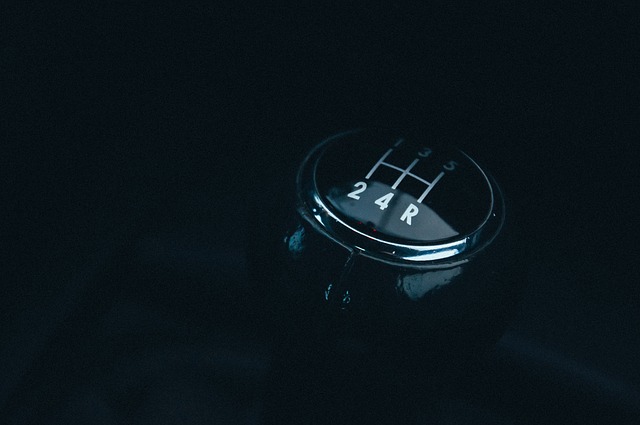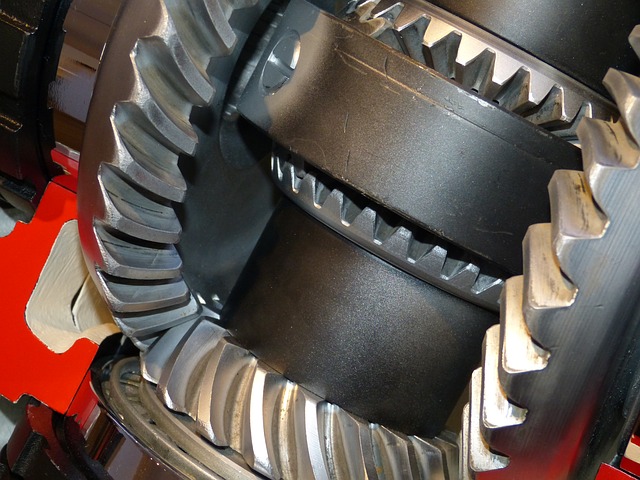Without a transmission, vehicles literally wouldn’t go anywhere. Since you can’t really see the transmission in your car, it’s often misunderstood. Knowledge is power, and knowing how your transmission works will help you maintain it better.
How Do Transmissions Work?
You likely know that there are two main types of transmissions: manual and automatic. Without getting  too technical, there are several gears fixed on two shafts. As the car is shifted into different gears by the driver or a computer, the gears from one shaft engage with the ones on the other.
too technical, there are several gears fixed on two shafts. As the car is shifted into different gears by the driver or a computer, the gears from one shaft engage with the ones on the other.
In manual transmissions, drivers must push down the clutch pedal to break the connection between the engine and transmission. The gears can then be moved, then the driver releases the clutch pedal and the connection is established again. It’s essentially the same process with an automatic, only the computer uses a torque converter instead of a clutch, at least in most setups.
Dual-clutches sit somewhere in the middle between manuals and automatics. Continuously variable transmissions (CVTs) have been increasing in popularity recently, and they eliminate individual gears completely.
Toyota Recommended Transmission Service
Toyota recommends specific service schedules for its vehicles, and that includes making sure the transmission is maintained. In general, you should have the clutch components inspected and the transmission fluid replaced every 30,000 miles. Doing this will help avoid larger problems later. The service schedule for individual Toyota models can vary, so it’s always a good idea to consult the owner’s manual or speak with a trained technician.
Signs of Transmission Trouble
There are many signs that your transmission needs to be looked at. One is if it just won’t go into gear. This can include the stick on a manual not moving, or an automatic skipping a certain gear. Several potential problems could trigger this, including low transmission fluid, the wrong fluid being used and even maladjustments for the clutch linkage or shifter cables.
Another common problem is slipping gears. That means the car starts to travel or is even going down the road, but the transmission slips, making the engine race while slowing down your momentum. This is a potentially dangerous situation. You need to have the car checked over ASAP, because several issues could be the culprit.
Sometimes transmissions make noise. If that happens when it’s in neutral, there are a few possible  causes. Low fluid or the wrong type can cause some bumping sounds. If the transmission is particularly noisy, it could be from serious mechanical damage, such as worn bearings or gears. If the problem includes grinding or shaking, that can be from a worn clutch, maladjustments or other worn components.
causes. Low fluid or the wrong type can cause some bumping sounds. If the transmission is particularly noisy, it could be from serious mechanical damage, such as worn bearings or gears. If the problem includes grinding or shaking, that can be from a worn clutch, maladjustments or other worn components.
Finding bright red, sticky fluid where your car’s been parked indicated a transmission fluid leak. The source could be in one of a number of locations. A technician can usually pinpoint it fairly quickly with the vehicle on a lift. From there, it’s just a matter of figuring out the best way to patch the leak, which may or may not involve replacing some parts.
If you smell burning coming from the transmission, that’s not something to ignore. It could indicate that there’s a problem with overheating. As the fluid burns, it can’t lubricate the gears and other components properly. The problem can be triggered by dirty fluid that needs to be swapped out, or a leak caused by a bad seal.
Vehicles with a manual transmission can experience a dragging clutch. You push on the clutch pedal, but the engine and transmission are still connected, and the transmission makes a horrendous grinding noise. Often the problem is with too much slack in the linkage between the pedal and the clutch disc.
Despite the name, your check engine light coming on can indicate a problem with the transmission. Modern vehicles have sensors that trigger the warning, like unusual vibrations you can’t even feel. When you see the check engine light turn on, it’s best to bring the car in and have the code read, avoiding bigger problems later.
T3 Atlanta For Transmission Serivce
If you hear the transmission whining or humming, that can spell trouble. At the first sign of these unusual sounds, you need to have the transmission checked over. The same goes for transmissions that don’t engage immediately after you push on the accelerator pedal.
When you experience any of the above symptoms, that’s the time to contact T3 Atlanta or stop by for an inspection. Our highly trained, professional technicians can quickly and accurately diagnose the problem.










Leave a Reply
You must be logged in to post a comment.